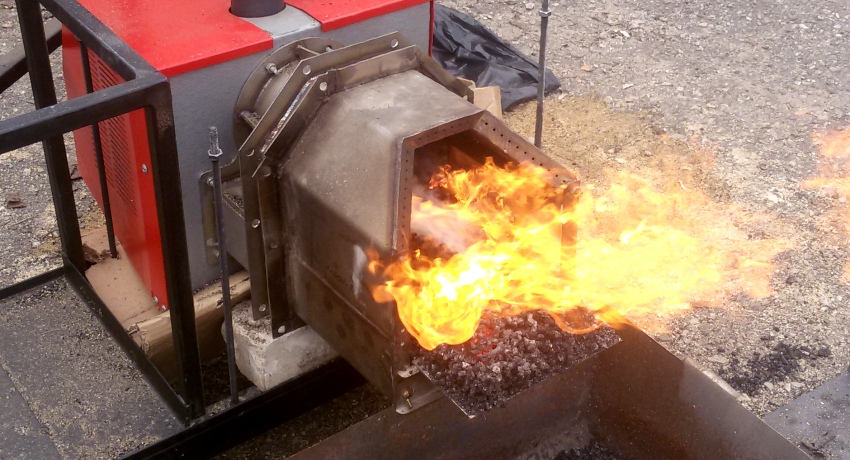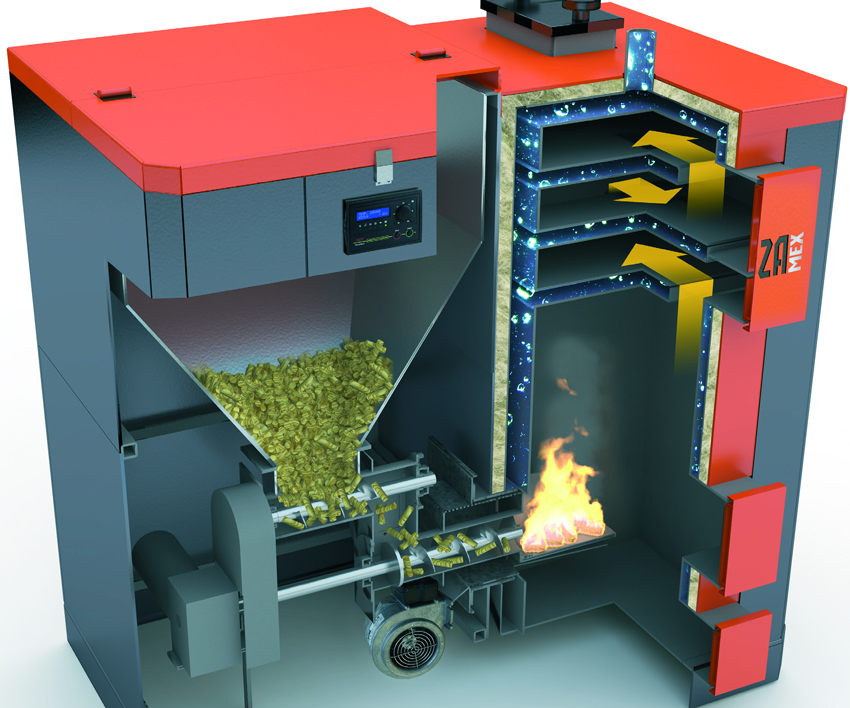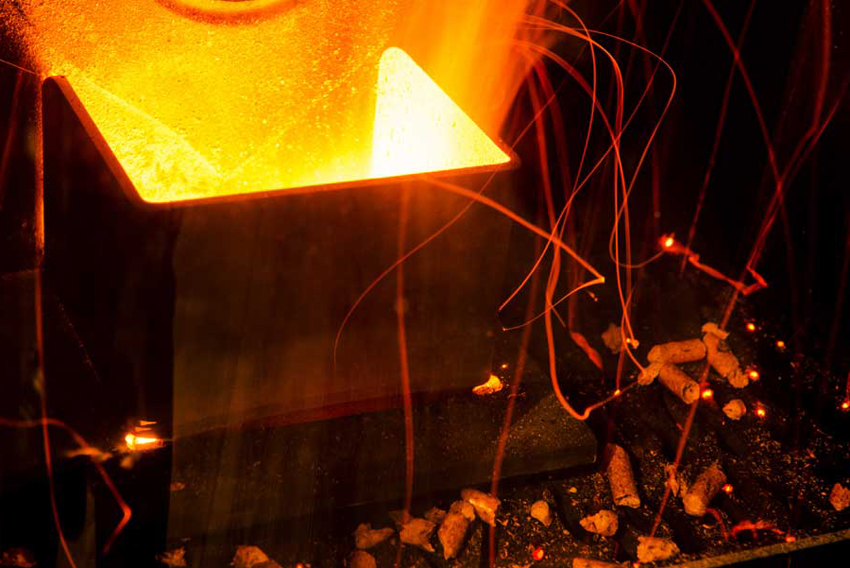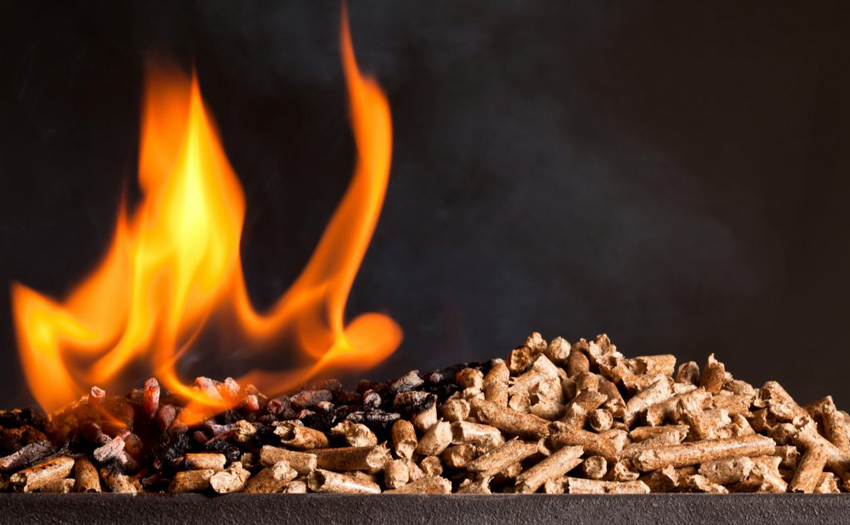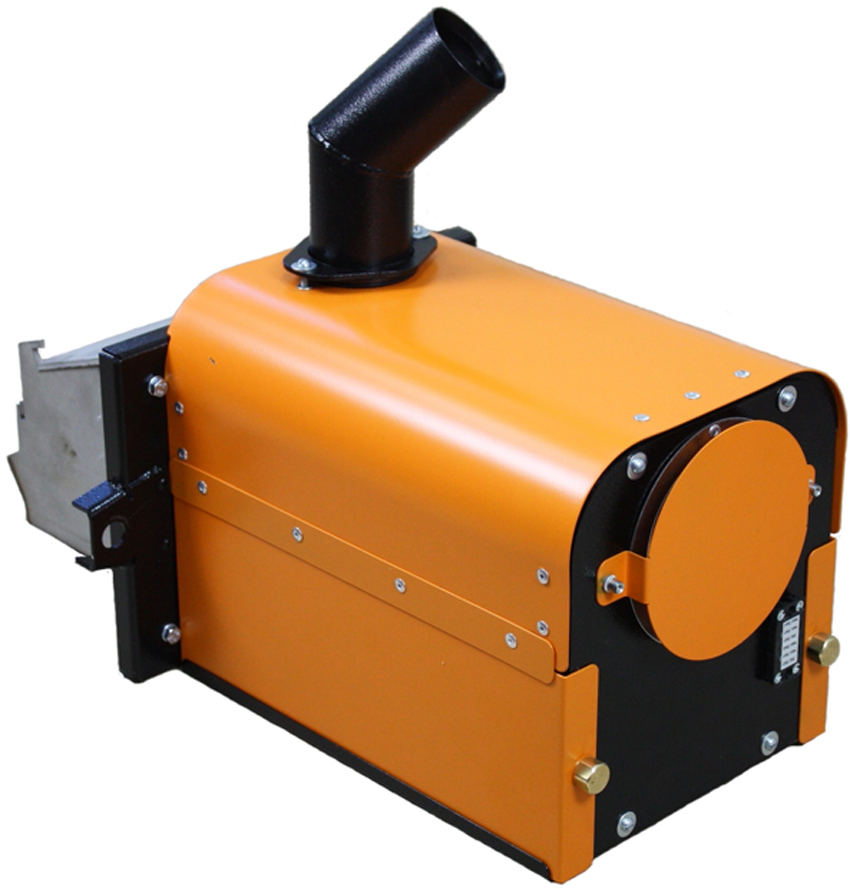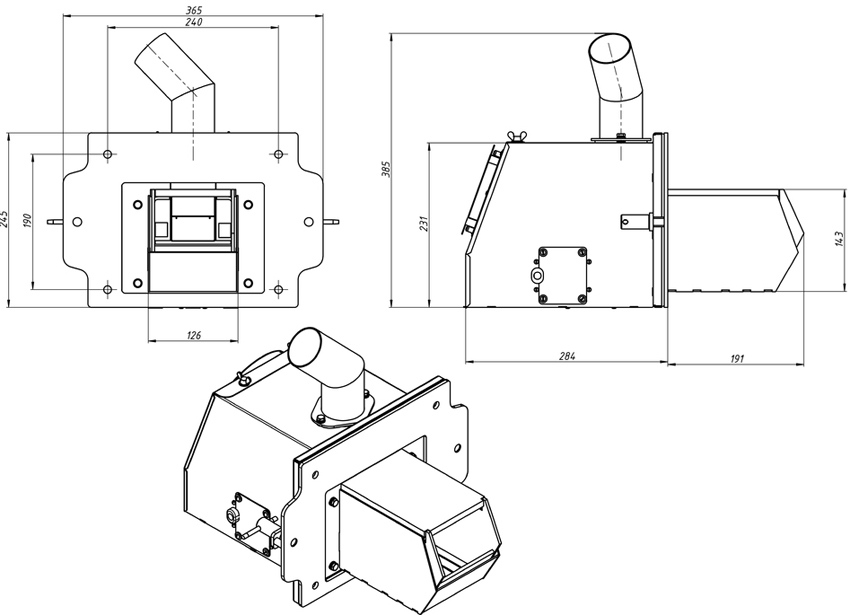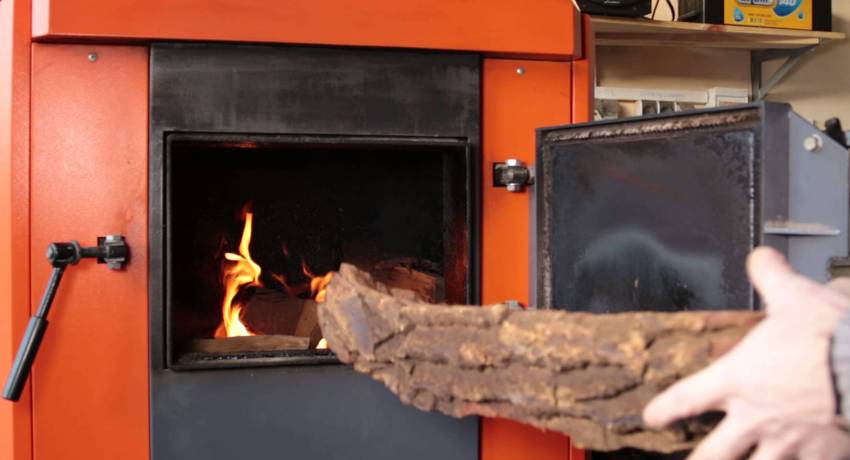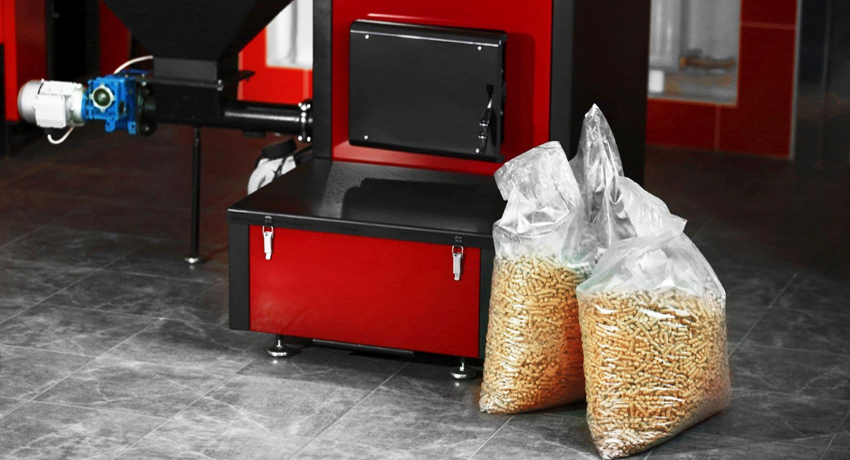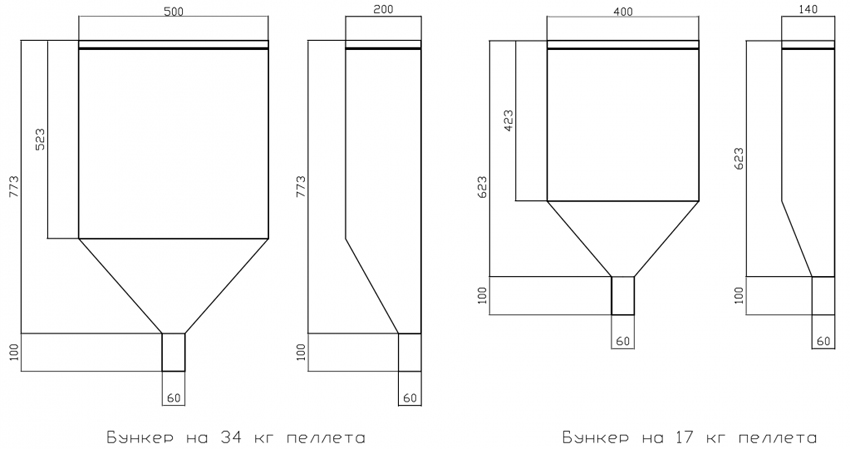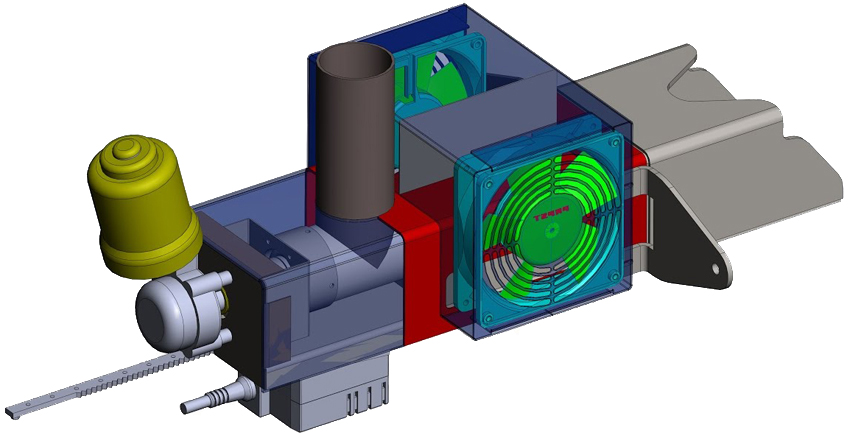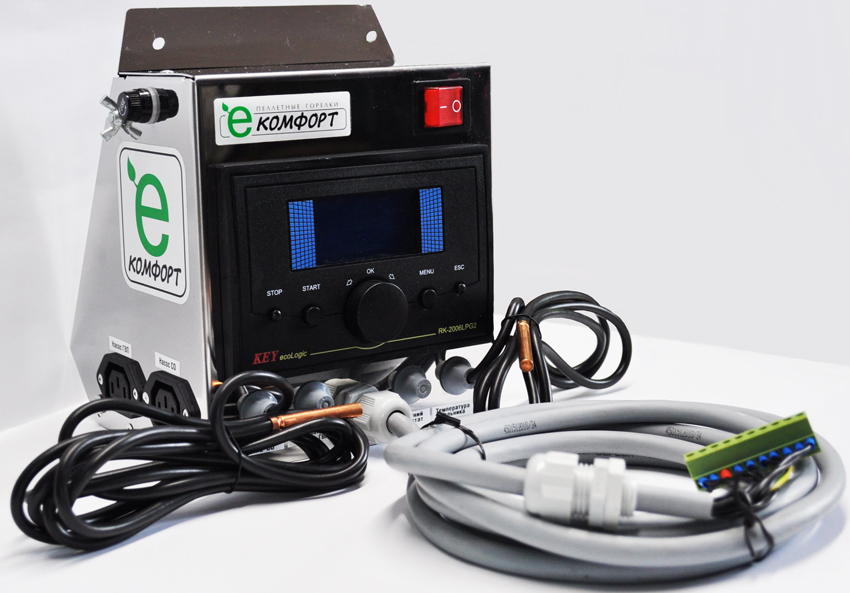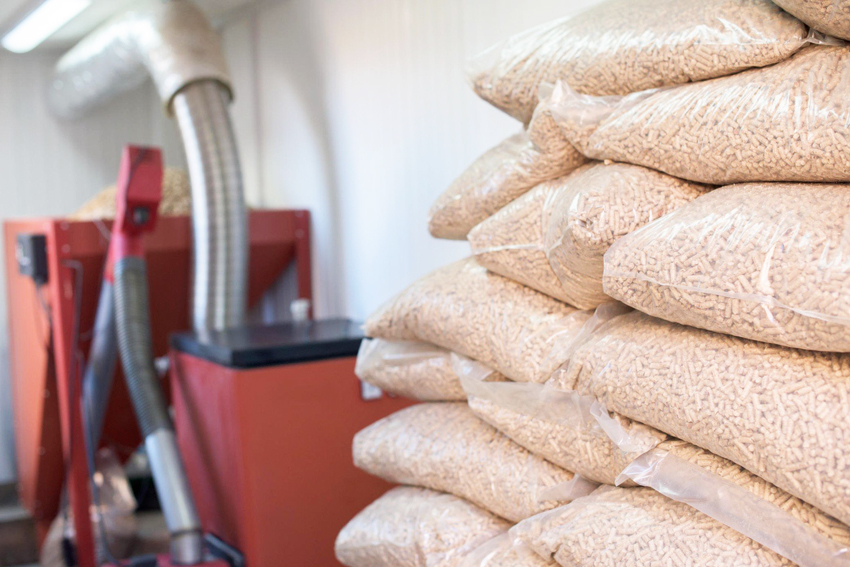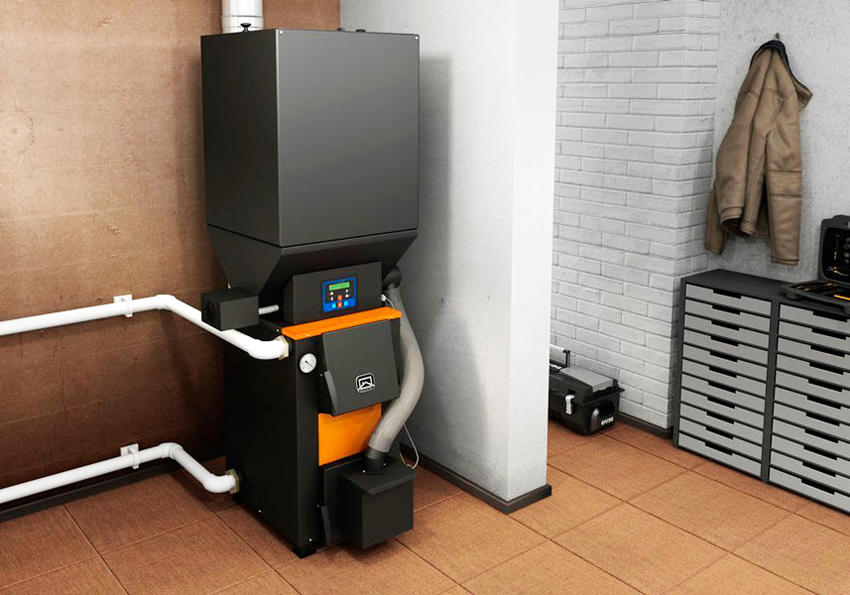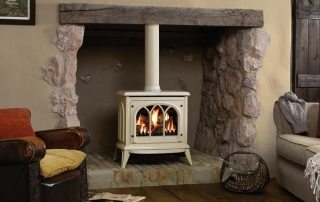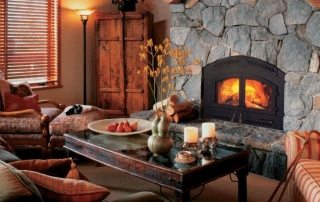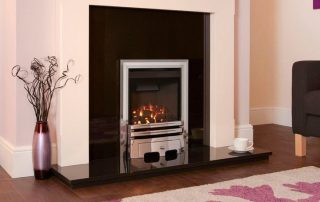A pellet burner is installed on a solid fuel boiler and is used to organize space heating. It can be purchased ready-made, but it has a rather high cost. If necessary, such a device can be made independently. A do-it-yourself pellet burner can be made of different materials and have both a simplified and a more complex design.
Content [Hide]
- 1 Why do you need a pellet burner: device features
- 2 Pellets: what is it? Detailed fuel characteristics
- 3 Design features of pellet burners
- 4 DIY pellet burner: varieties
- 5 How to draw up a drawing of a pellet burner correctly?
- 6 DIY pellet burner: preparatory stage
- 7 How to automate the process yourself and adjust the pellet burner?
- 8 Pellet burner Zota Fox 25: reliable and efficient model with wide functionality
- 9 Automatic pellet burner Teplodar APG-25
Why do you need a pellet burner: device features
Pellets are high quality fuel that can compete with ordinary firewood. For the manufacture of such raw materials, wood and agricultural waste is used, as well as peat. Pellets are small granules.
What is the advantage of such pellets over standard fuels? First of all, it should be noted the high efficiency of raw materials. Ordinary firewood after burning out gives from 40 to 80% of energy. The remaining material is recycled, so the economic feasibility of such heating is questionable.
A boiler with a pellet burner can increase material recycling by up to 90%. This is one of the highest combustion rates among all types of fuel. It should be noted that granulated raw materials are not recommended for some types of boilers. For example, such fuels can damage equipment that is based on pyrolysis.
Helpful information! When choosing a burner, you need to pay attention to its power. Today you can buy models that automatically adjust this indicator. An example is the Zota pellet burner.
During fuel processing, the temperature inside the burner can reach 1000 ° C. It follows that the utmost care must be taken when using such a device.This is especially true for do-it-yourself designs. Assembly errors or improper operation can cause fire.
Pellets: what is it? Detailed fuel characteristics
This raw material is highly energy intensive. It is thanks to this that it has become widespread. One kilogram of granular pellets during processing emits approximately 5 kW / h of heat. It follows from this that for the organization of heating a standard private house, which has an average size, it will take about 2 kg of material per hour.
Pellets for the burner are loaded into the device approximately 1-2 times a day. When loading a new portion of raw materials, it is recommended to clean the ash pan from combustion products. Stored burners require weekly cleaning, and homemade gadgets get dirty even faster. A DIY device is recommended to be cleaned approximately once every 3 days. Otherwise, it will fail pretty quickly.
Some burner models do not require loading for 5 days. An example is the APG-42 pellet burner. This model is compatible with Teplodar-Cooper boilers.
The disadvantage of pellet burners is reverse combustion, which is accompanied by the penetration of the pyrolysis zone into the bunker intended for storing and supplying fuel. This entails smoke in the room in which the heating equipment is located, and there is also a risk of fire.
Pellets from sawdust or any other recycled waste can be blown away if there is an excess of air in the structure, which will lead to a large amount of waste (ash). The air supply must be accurately adjusted, otherwise not only its excess, but also its deficiency can lead to ineffective operation and rapid clogging of the device.
The need for granular fuel in air is primarily determined by the combustion mode. Finding the right regimen is paramount and very important. The burner goes into operating mode in 5 stages. Before using the device, you must familiarize yourself with each phase in more detail.
The first step is to ignite. The pellet boiler burner is ignited using a special ceramic lighter rod, which, when switched on, heats up to a very high temperature (900-1100 ° C). Self-made devices can be kindled with a regular torch.
Note! Under no circumstances should flammable liquids be used to ignite the burner. In this case, the combustion process will immediately go into the bunker, as a result of which a fire will occur.
The second stage in preparing the equipment for operation is launch. It is very important to adjust the correct air supply in order to adjust the burner flame. Then the device is overclocked. At this point, the burner enters normal operating mode.
After acceleration, it is necessary to adjust the air so that the correct temperature of the coolant in the return is set inside the device. Then you need to stop the supply of granular fuel and set the required air intensity.
Design features of pellet burners
The main task of any burner is to ensure uniform heating of the boiler. This goal is achieved through the processing of granular fuels. From a structural point of view, the burner is a combustion chamber that most often resembles a pipe in shape. Combustion inside such a device occurs due to the continuous supply of air.
Fuel delivery is carried out by a special device - auger.For air injection, a fan is provided in the structure, the operation of which does not allow the flame to go out. The burner can have a variety of shapes that do not significantly affect the efficiency of the device. Chambers that have a circular cross-section are the most common. This is because they are the easiest to make. However, rectangular options are quite common.
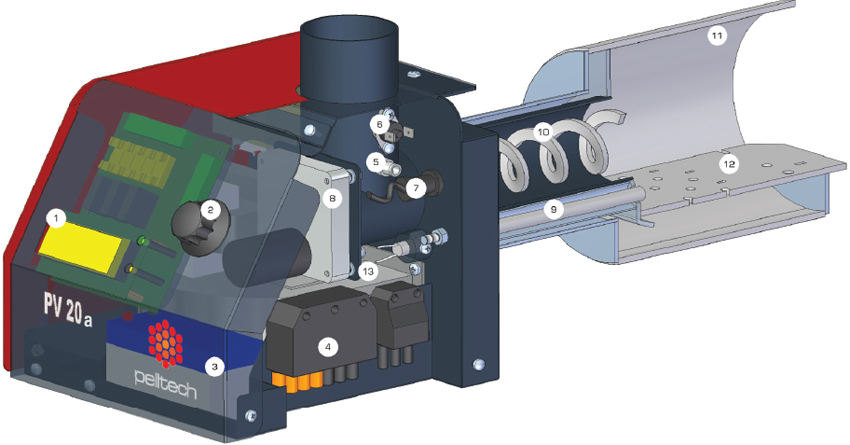
Pellet burner device, where 1 - LCD display, 2 - control knob, 3 - backup battery, 4 - connecting socket, 5 - fuel level sensor, 6 - safety thermostat, 7 - photo sensor, 8 - internal auger motor, 9 - igniter , 10 - internal auger, firebox, 11 - combustion grate, 13 - fan
Round burners used for pellet processing have a flat base. It is used to contain fuel and is mounted externally to the front surface. It should be noted that some burners have the ability to connect a GSM module. An example is the Terminator 15 pellet burner. Its cost is approximately 75 thousand rubles.
The principle of operation of these devices is quite simple. First, the sawdust is loaded into the hopper, after which they are delivered through the channel to the burner. The air blower maintains the required flame level inside the device. Combustion products accumulate in the ash pan. It is recommended to clean this compartment at least once a week.
DIY pellet burner: varieties
Devices that are used for the processing of granular raw materials are divided into two types, depending on the principle of operation - with forced intake and gravity. The choice of this or that type of equipment depends primarily on the individual operating conditions.
Note! The most common burner option requires the mandatory availability of electricity. In this case, electricity is necessary for the operation of the mechanism that ensures the uninterrupted supply of granular fuel. Automatic pellet burners (with forced intake) are considered the best solution for organizing the heating of a building.
Devices of this type include several mechanisms through which the granules are supplied. The first one operates with a pneumatic system. The second mechanism is equipped with a special tool - auger. Safety in the system is ensured by the design of the channel, installed from the bottom up, through which the granules are fed.
Automatic devices have one major advantage - fire safety. Such devices are used in equipment from different manufacturers. For example, they are integrated into Teplodar boilers. Pellet burners, reviews of which are mostly positive, have a rather high cost. The price of some models exceeds 150 thousand rubles. More budget options can be purchased for 60-80 thousand rubles.
The pneumatic type design offers maximum safety. This is because the pellet feed system delivers fuel in small portions. Thus, it is not delayed in the communication channel. For such a burner, it is possible to install an oversized hopper, which does not require frequent loads. A device of this type can be purchased if desired. Currently, pneumatic pellet burners Obshchemash are very popular.
Feeding mechanisms related to the screw type include two main units. The first auger is used to take granulated fuel from the bunker. The operation of this device allows you to transfer pellets to another receiver. The second auger then directs the raw material directly to the burner.
The disadvantage of devices in which the fuel supply is performed forcibly is their volatility. In the event of a power outage, the burner stops working.
Gravity pellet burner: design features
Devices of this type, operating on pellet fuel, have a different principle of pellet feeding. It should be said right away that such units are more convenient to use. The main advantage of the gravitational mechanism is that it does not require an obligatory connection to the mains.
In this case, the pellets are located in the hopper and can enter the connected channel under their own weight. There are several popular domestic companies engaged in the production of such units (Pelletron, Begemot). A pellet burner of this type is very easy to start - by changing the position of the damper. It is important to remember that a draft regulator is installed on the chimney, which can also be adjusted.
Note! The main disadvantage of all gravitational structures is that they do not provide such high operational safety as their counterparts. During operation, there is a possibility of ignition of granular fuel in the bunker. An increased risk of ignition exists due to the design features of the hopper, which is in direct connection with the hole through which the fuel is supplied.
The efficiency of gravitational devices is slightly lower than that of analogues operating due to the forced supply of granular fuel. Installing this type of pellet burner is not a difficult task. It can be fully connected in just a few hours.
In order to increase the fire safety indicators of this device, many manufacturers install special dampers on it. They are equipped with thermal sensors that, in the event of a flame entering the channel connecting to the hopper, are triggered and block the passage.
How to draw up a drawing of a pellet burner correctly?
Before starting the independent design of a burner intended for the processing of pellet fuel, it is recommended to complete its individual drawing. The diagram must contain information about all units and details. The drawing requires specifying the main elements:
- camera;
- fuel bunker;
- screw;
- fan.
The diagram should contain all the required dimensions of these products. When making a drawing of a pellet burner with your own hands, you should remember that the detail of its execution depends on how reliable the device for processing fuel granules will turn out.
Before starting to draw up the diagram, it is recommended to calculate the required dimensions of the hopper in advance. When performing the calculation, you should take into account what area the structure will heat. It should also be noted that the parameters of the hopper have a direct impact on the frequency of cleaning.
The fan is controlled by an electronic unit. When drawing up a diagram, you need to remember that the performance of the main units of the device depends on the availability of electricity.
Related article:
How to make a long burning solid fuel boiler with your own hands: drawings
Device and principle of operation. How to do it yourself. Drawings and diagrams for self-production. Recommendations.
Thus, it is not so difficult to make a drawing of a pellet burner with dimensions with your own hands. If necessary, you can use a ready-made scheme, of which there are many on the Internet. But in such a situation, it is required to select a drawing that will meet specific conditions.
DIY pellet burner: preparatory stage
Before starting the assembly of a burner that processes granular fuel, you need to do some preparatory work. First of all, you need to calculate the area that will be heated by this device. Knowing this indicator, it will not be difficult to calculate the required power of the heater. When calculating the power indicator of the pellet unit, the following factors are taken into account:
- the average annual temperature in a particular region;
- building area;
- the height of the ceilings in the building;
- the number of door and window openings;
- building materials from which the walls, floor and ceiling are made.
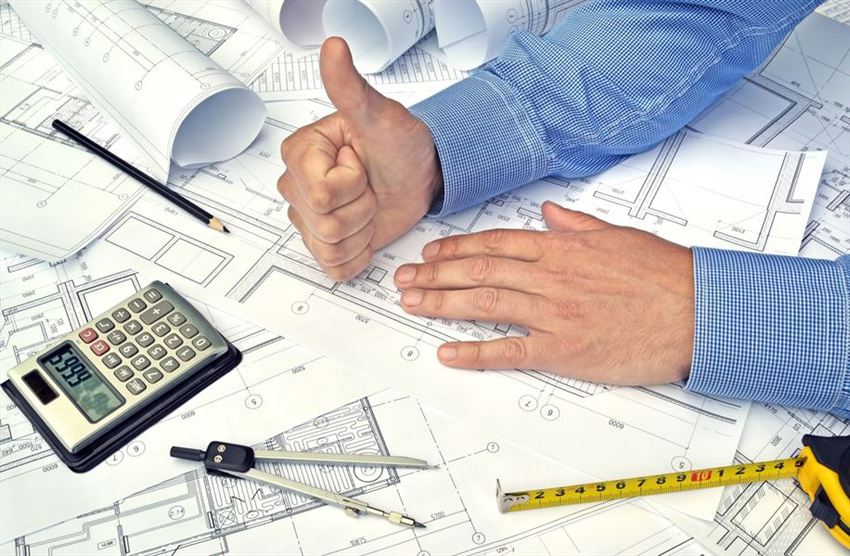
Before making a burner with your own hands, you need to calculate the area of \ u200b \ u200bthe room that will be heated
Then you should prepare all the tools that will be used when assembling the pellet burner with your own hands. Video and photographic materials help to get an idea of this process, so it is recommended to study them in detail.
It is necessary to determine the heat transfer resistance index of the materials used. This coefficient will be required in the future to calculate the heat loss. The power of the heating equipment must be at least 10% higher than the heat loss.
Helpful information! There are special online calculators that allow you to determine the power of the boiler. They can be easily found on the Internet using the search bar of the browser.
Experts recommend purchasing ready-made pellet burners. The price of these devices varies from 50 to 200 thousand rubles. It is quite difficult to make such a device, since many working nuances must be taken into account. Purchased models are also equipped with the necessary thermal sensors, which makes their operation convenient and safe.
How to make a homemade pellet burner: basic recommendations
The most critical structural element that is part of a pellet burner is a basket. When making such an element yourself, it should be remembered that there is one common problem - the sticking of granules in the rear wall, which is inclined and has slots. To solve the problem, you need to make the slots differently. The standard option allows for solid slots, but a more cellular structure is recommended.
The ideal size of the rear wall slots should be 2 mm smaller than the size of the secondary fuel pellets. The gap between the back wall and the bottom of the basket must be at least 6 mm. The front wall also has slots, but in this case they must be continuous.
Before starting work, it is recommended to study the videos demonstrating the assembly of the pellet burner. Reviews about various do-it-yourself devices will also help you choose the desired device option.
A channel is located under the bottom of the basket included in the burner. It is required for secondary air. The duct height should be approximately 29 mm. A deviation of 1 mm is allowed here. The back wall itself is not perpendicular, but inclined. The tilt angle is 45 °.
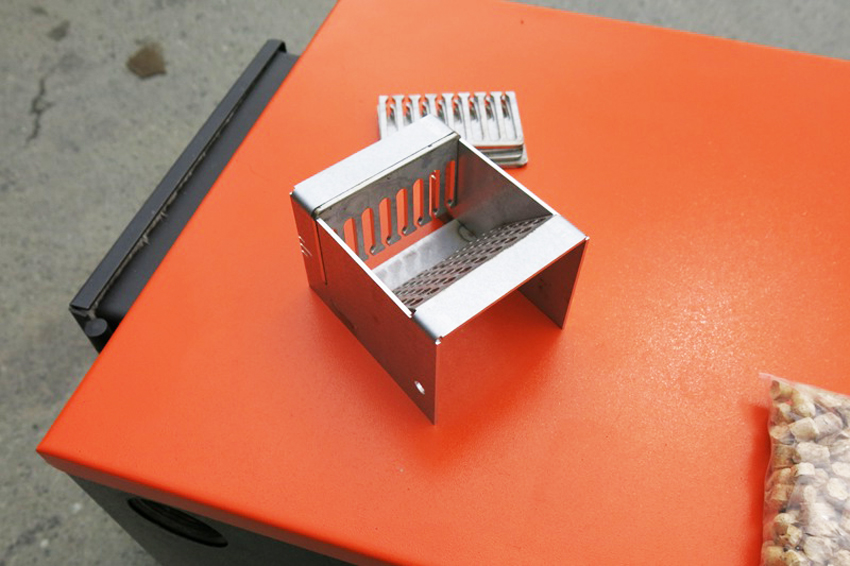
It is recommended to make the size of the rear wall of the basket 2 mm smaller than the size of the pellet fuel granules.
The price of a pellet burner, purchased ready-made, is several times higher than the cost of the prefabricated version. Thus, the independent manufacture of this device can significantly save money.
The size of the basket with a tray is selected according to individual needs. In this case, it is necessary to focus on the indicator that determines how much fuel will be processed in 1 hour of burner operation. The best option is a device with dimensions of 13x13 cm.The depth of such a basket should be approximately 10-12 cm.Such a device allows you to burn about 2-3 kg of granular fuel in 1 hour.
Making a hopper for a pellet burner with your own hands
The second necessary element of any burner installed on heating equipment is a hopper. The most common problem that occurs during the operation of self-made devices is associated with the penetration of flame into this structure. In order to assemble a reliable bunker, it is recommended to use the ready-made drawings of the popular Teplodar or Pelletron bunkers. The pellet burner can be made in any capacity, but it is best to take standard 15 kW devices as an example.
The volume of the bunker is also selected individually. You can make a box that will hold 17 or 34 kg of granular fuel. For the manufacture of the combustion chamber, a material such as stainless steel is traditionally used. Moreover, its thickness should be at least 2 mm.
Note! Steel walls are joined using welding equipment.
Hopper dimensions are borrowed from any suitable model (for example, Pelletron 15). The pellet burner includes a secondary air duct, which is best done in the shape of the letter "L". This will significantly increase the efficiency of the operating device.
In addition, the burner should be supplied with blowing. This will make it possible to simplify its launch, since the reaction to draft in the chimney structure will be reduced. For a device with a power of 15 kW, 20 W fans are suitable. Experts recommend purchasing a fan called a snail. This is due to the fact that the operation of such a device is the easiest to regulate.
Further arrangement of the pellet boiler with your own hands
The assembly of the device body is carried out in several stages. You can cope with this task yourself, but you need to clearly understand the nuances of the work. The body is best done in a horizontal plane. This is because this arrangement allows for maximum equipment efficiency.
It is recommended to use brick (fireclay) as a material for the manufacture of the case. The process looks pretty straightforward. It is necessary to assemble the box and place the heat exchanger inside it. It should be noted that the brick case is made without a top cover. The heat exchanger must have outlets for connecting heating pipes.
Do not forget that the burner must be equipped with a special controller. Pellet burners can be completely mechanical, but in this case it is much more difficult to adjust them. Regulation is carried out taking into account the individual characteristics of the device and the area of the heated room.
The use of bricks for mounting the enclosure is recommended because it has good insulating qualities and is capable of storing heat to a greater extent than other common materials such as steel and cast iron. Photos of burners and other heating equipment can be easily found on the Internet.
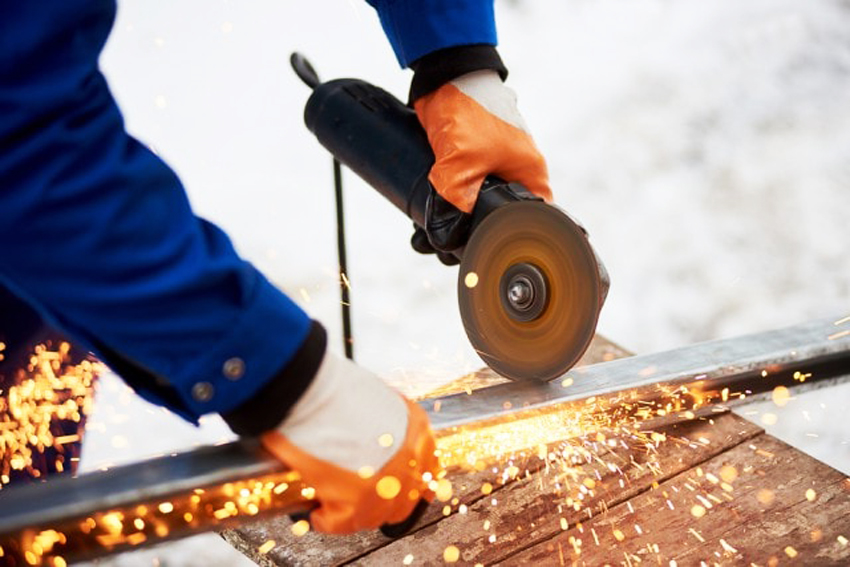
To make a heat exchanger, you need to cut pipes with a rectangular cross section and connect them together
First of all, a heat exchanger is manufactured. To do this, it is necessary to prepare pipes with a rectangular cross section. Then they need to be cut (in accordance with the drawing) into pieces of the required length. After that, the individual segments are connected together using welding. It is required to provide a supply of pipes to the heat exchanger. Then a chimney with an ash pan is installed.
How to automate the process yourself and adjust the pellet burner?
Homemade pellet boilers have one feature - the absence of a device in the design that provides an inflow of natural draft. As you know, it is impossible to maintain a flame inside the device without a draft, therefore a fan will need to be installed. To ensure the smooth functioning of the boiler, an auger is also used, which is responsible for delivering fuel from the bunker to the combustion chamber.
In order to fully automate the workflow and, if necessary, achieve its adjustment, it is necessary to integrate the controller into the design. Its role is played by the pellet burner control unit.
Note! Mechanical control is carried out by means of a simple regulator.
The main task that ensures the normal operation of heating equipment is to achieve a balance between two main indicators. The first is the granular fuel volume, and the second is the air flow rate. If it is possible to correctly adjust these indicators, then the flame will evenly heat the heat exchanger.
All required values can be adjusted using the burner control module. What it is? The control unit provides full control over the operation of the heating unit. By far the best option is to purchase a new device.
Purchased models have the ability to quickly connect to the main working elements of the pellet boiler. As a result, the controller will regulate the granular fuel feed rate, as well as the fan speed. Adjustment of the pellet burner allows the display, which is located on the control unit.
It should be noted that the auger must have a sensor that monitors the need to supply granular fuel. It works as follows: it detects when the auger is full and sends a signal to the equipment. After that, the pellet feed is stopped.
Pellet burner Zota Fox 25: reliable and efficient model with wide functionality
A pellet burner of this type is used in Zota boilers of the Fox series. It is used in heating units, the design of which does not include a plate of cast iron material. To date, such a burner has proven itself only from the best side. It is distinguished by its efficiency and reliability, as well as a long service life.
The Zota Fox pellet burner processes pellet fuel. The size of each pellet used in this case ranges from 6 to 8 mm. The power of this unit is regulated by an automatic system. This indicator can be different (from 5 to 25 kW).
Installing a Zota pellet burner on a solid fuel heating boiler allows you to automate its workflow. Equipment equipped with a granule processing unit has certain advantages:
- reducing the cost of heating a residential building;
- increase in the duration of work when loading one portion of granular fuel;
- maintaining the required temperature in the room.
Helpful information! The power indicator of the burner used for the processing of pellets is determined depending on the area of the heated room. It should be noted that a 1 kW device is capable of providing heat to a room with an area of 10 m².
The burner power is automatically adjusted. For this, a special control module is provided in the design. Pellet burners Zota Fox (5-25 kW) have many additional functions that are easy to activate and configure on the control panel. These include auto-ignition of granular fuel, quick start and shutdown, automatic burner cleaning and other modes.
Safety in such a device is implemented by a sensor that regulates the combustion temperature of the fuel. Also, this device can be connected to a GSM module or a thermostat installed in a heated room. The cost of such a burner is approximately 75 thousand rubles.
Automatic pellet burner Teplodar APG-25
This device is automatic. It has many benefits. The products of this company are of high quality and long service life. A burner of this type is implemented together with a hopper, which is delivered disassembled. In addition to the hopper, the kit includes an auger that delivers pellets, as well as a control panel.
This model has many advantages. One of them is ease of installation. If desired and with certain skills, the connection of such a model can be completed in just 30 minutes. Pellet burners Teplodar require preliminary adjustment, which is made in accordance with the needs. The hopper should not be filled too often (2 times a week is enough).
In this case, the ash pan is cleaned from combustion products no more than 2 times a week. As a rule, only one time is sufficient. It should be noted that, in addition to the APG-25, there are more powerful modifications produced by this manufacturer. For example, the APG-42 model has become widespread.
These devices are installed on Cooper heating equipment. Pellet burners of this type are equipped with an improved screw, which increases the overall reliability of the structure and its operational life. The control panel has a convenient and understandable display, which indicates all the necessary operating parameters of the heating equipment.
Thus, in order to manufacture a burner that processes pellet pellets, it is first necessary to calculate the power and prepare a drawing. During work, you must be careful, since any mistakes made during the assembly of the structure can lead to a fire of the pellets in the hopper.
